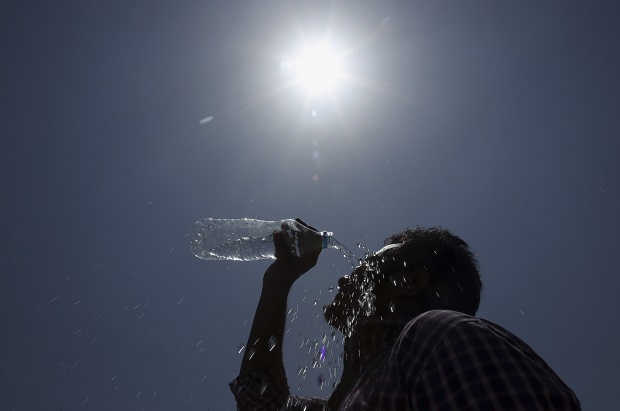‘Dangerous’ heat starts – Pagasa
The summer “init factor” has reached fever pitch again in the Philippines, as the heat indices started reaching a “dangerous” 41° Celsius in several parts of the country this week.
The “heat index” or the “human discomfort index,” colloquially dubbed “init factor,” is the temperature people feel, as opposed to the temperature measured by a dry-bulb thermometer. High air temperatures and high relative humidity will give high heat indices.
The Philippine Atmospheric, Geophysical and Astronomical Services Administration (Pagasa) started measuring the heat index after the onset of the dry season for the year was announced last Tuesday. The “init factor” is monitored until the rainy season starts.
Data from monitoring stations of the Philippine Atmospheric Geophysical and Astronomical Services Administration showed that on Friday as of 2 p.m., 11 areas experienced heat indices 41°C or higher on Thursday, with the station in Dagupan City, Pangasinan registering the highest at 45.2°C, with air temperature at 34.9°C.
Article continues after this advertisementThe Pagasa has warned that a heat index of 41°C to 54°C is already considered as “dangerous,” with heat cramps and heat exhaustion likely, and heat stroke probable with continued activity under the sun. A heat index above 54°C is “extremely dangerous,” with heat stroke imminent.
Article continues after this advertisementThe other areas that experienced “dangerous” heat indices on Friday were in in Ambulong, Batangas; Cabanatuan, Nueva Ecija; Casiguran, Aurora; Subic Bay, Olongapo; Cuyo, Palawan; Dauis, Bohol; San Jose, Occidental Mindoro,; Sangley Point, Cavite; Tuguegarao city, Cagayan; and in Zamboanga city. The same heat index levels were observed in the 11 areas on Thursday.
Meanwhile, heat indices of 32°C to 41°C calls for “extreme caution,” exposure to which could cause heat cramps and heat exhaustion. Continuing activity in such hot conditions could result in heat stroke.
A heat index of 27 to 32°C is already deserving of “caution.” Under these levels, fatigue is possible with prolonged exposure and activity to heat, and continuing activity could result to heat cramps.
In a climate outlook forum last March 22, the Pagasa already forecast for April to September this year that “near average to slightly warmer than average surface temperature is expected…over most parts of the country.”
Below to way below normal rainfall over Luzon and near normal levels of rainfall in Ilocos region and portions of Northern Mindanao are also expected this month, with the weak La Niña conditions that had been prevailing over the tropical Pacific expected to transition to neutral conditions sometime this April, according to the Pagasa.
